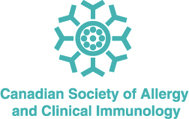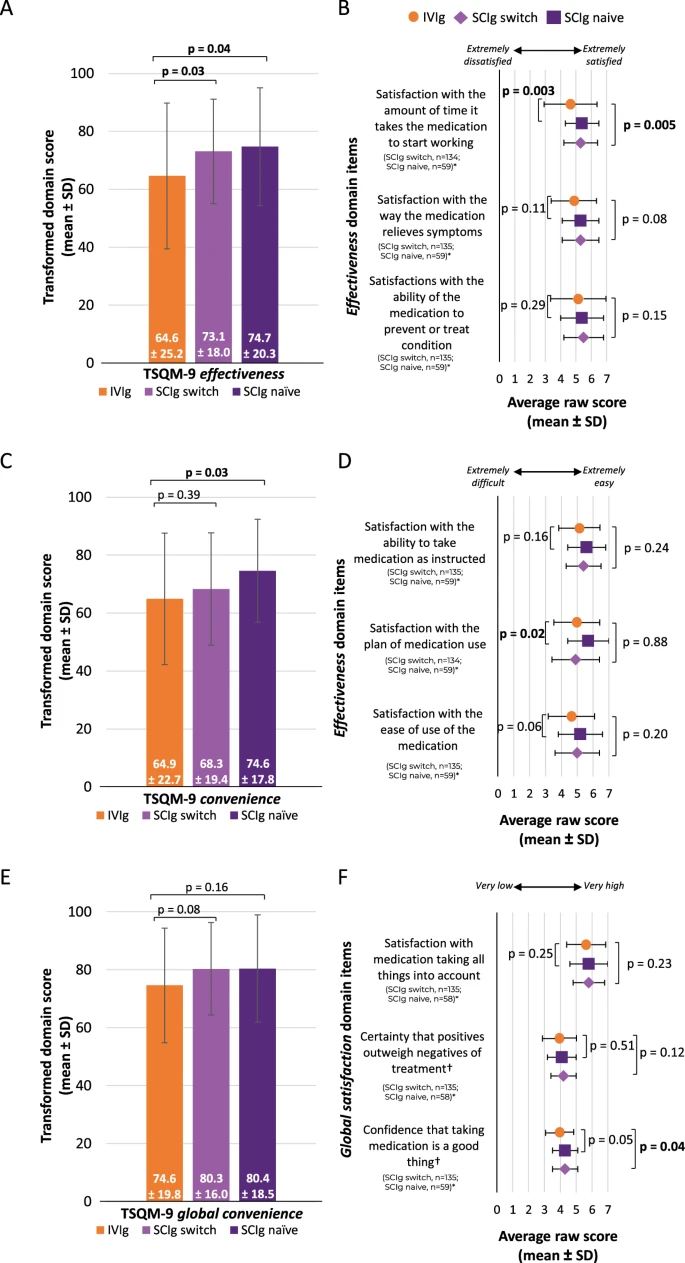- Research
- Open Access
Allergy, Asthma & Clinical Immunology 18, Article number: 110 (2022)
Abstract
Background
Understanding the impact of different immunoglobulin (Ig) infusion methods (intravenous [IVIg] and subcutaneous [SCIg]) upon treatment experience can potentially facilitate optimization of patient outcomes. Here, the perspective of patients with primary and secondary immunodeficiency diseases (PID and SID, respectively) receiving IVIg and SCIg was evaluated, in terms of treatment satisfaction, accounting for treatment history, using Association des Patients Immunodéficients du Québec (APIQ) survey data.
Methods
The online APIQ survey (shared October 2020–March 2021) of patients with immunodeficiencies in Canada contained 101 questions on: Ig use, history, and detailed infusion characteristics; as well as structured patient-reported outcomes such as treatment satisfaction (via TSQM-9), symptom state (via PASS), general health perception (via GHP), and physical and mental function (via PROMIS). Adult respondents (≥ 18 years old) currently using Ig were compared by their current Ig infusion method (IVIg or SCIg cohort) overall, and in a sub-analysis, the IVIg cohort was compared with the SCIg cohort after stratification by respondents who started SCIg when naïve to Ig (‘SCIg naïve’) or with previous IVIg experience (‘SCIg switch’).
Results
In total, 54 respondents currently used IVIg and 242 used SCIg. The average duration per infusion of a weekly SCIg infusion was significantly shorter compared with the average duration of a 3–4 weekly IVIg infusion (p < 0.001). The SCIg cohort was associated with significantly higher scores for the TSQM-9 effectiveness domain compared with the IVIg cohort. The scores for TSQM-9 convenience and global satisfaction domains were similar in the two cohorts. The SCIg cohort was also associated with a significantly higher proportion of respondents who were in an acceptable symptom state and a lower proportion who reported very poor or poor perception of health compared with the IVIg cohort. Further, the SCIg naïve subgroup was associated with significantly higher TSQM-9 effectiveness and convenience domain scores compared with the IVIg cohort, while there was no significant difference between the SCIg switch subgroup and the IVIg cohort in terms of convenience.
Conclusions
A better understanding of how different IgRT administration methods impact treatment experience and satisfaction may assist with informed treatment decision making and ultimately further improvements in patient outcomes.


No comments:
Post a Comment